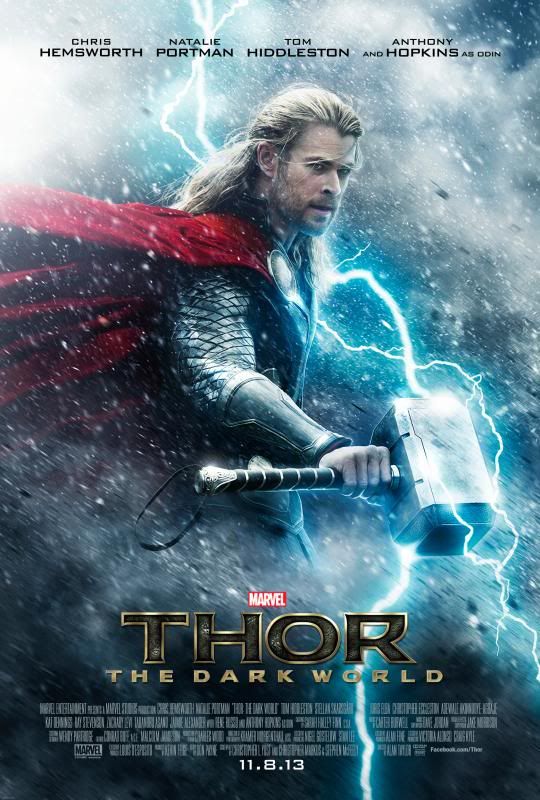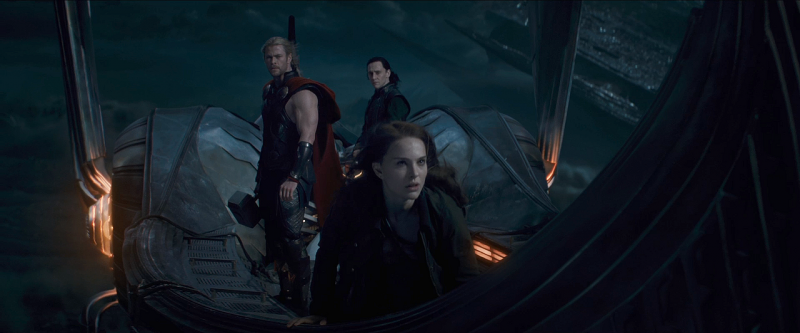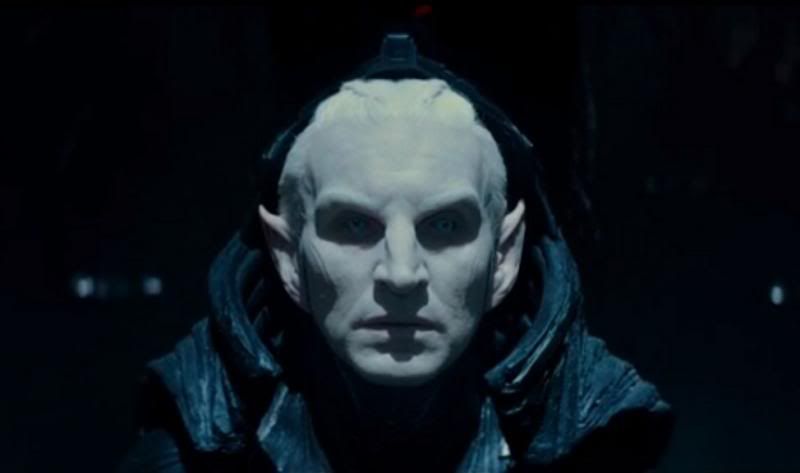If you look over Norse myths in their original forms, you can see why Marvel pulled ideas from its pantheon. The bombastic, fiery personalities of the gods of Asgard fit the hyperbole and spectacle of comic books very well. Jack Kirby’s imagination brought these characters to vibrant life, making their designs colorful and outlandish. The film adaptation of Thor transitioned Jack’s vision to the big screen for modern audiences, The Avengers brought these demi-gods into contact with the more grounded aspects of the interconnected narrative, and now Thor: The Dark World aims to expand the scope of its own ambition to make both its own stage and that of the Marvel cinematic universe that much wider.

Thor’s appearance alongside Iron Man and Captain America was no accident. Having reclaimed his birthright and gained a sense of humility and perspective, the son of Odin set about bringing peace to the Nine Realms, defeating forces set on destruction and trying to bring peace instead of the war he sought with Jotunheim. In Asgard’s past, this initiative often took a darker form, and Svartalfheim, former home of the dark elves, was rendered nearly lifeless after the war that raged there centuries ago. However, the dark elf king Malekith survived with some of his followers, and awakens to seek a deadly force known as the Aether to help him have his revenge on Asgard. The perfect time for this is a convergence of the Nine Realms, which begins to play with primordial forces like gravity on Earth, bringing it to the attention of astrophysicist Jane Foster, who still anticipates the return of Thor. To defeat Malekith and save all of the worlds he knows, Thor must forge an alliance with one of most treacherous creatures ever known: his adopted half-brother, Loki.
It’s pretty obvious from the outset that Thor: The Dark World has a story to tell, and wishes to waste no time doing it. The film is front-loaded with a depiction of the ancient war with the dark elves, and much of the first half of the film is filled with dialog that is largely expository. Only the barest of connections is drawn to the previous films, and one gets the impression that the film’s writers just assume that anybody seeing this one has already seen everything leading up to it. While it’s not an unfair assumption to make, anybody new to the universe in the audience may end up a little bit lost. Still, it’s good to be back in Asgard, and as much as there’s a lot of ground to cover story-wise, the story that we get isn’t necessarily bad. It just suffers from a little bit of a pacing problem.

You’d think they’d be more reluctant to turn their backs on Loki.
The other drawback to being so concerned with checking off story points to make sure nobody’s lost or confused is that character moments take a back seat. This is a shame, because this is a very talented cast with interesting characters to portray. Thor and Loki, in particular, have both grown and changed since the previous films. Thor is much more agreeable and humane, acting a great deal more like DC’s Superman than Superman did in Man of Steel. When Asgard is attacked and the damage severe, it is Thor who argues with Odin for a solution that doesn’t lead to more war and destruction, which is a clever reversal of their roles from the first film. As for Loki, his defeats have left him frustrated and malicious, but not in a monomaniacal myopic sort of way. Even moreso than before, he’s a calculating and conniving character, deceptively charming and absolutely deadly, especially when underestimated. It’s clear that Marvel knows how much he’s admired by fans, even though he’s clearly still an ambitious and traitorous creature. I would have liked to see more of these two, but what we get is pretty good.
Once the story gets done setting up all of its dominoes, though, the resulting spectacle is undeniably fun. Thor: The Dark World feels even more like something lifted from the likes of Buck Rogers or Flash Gordon than the previous film, and it hits all of the right chords to provide that surge of excitement and adventure from exotic new worlds and epic battles. It continues the Marvel tradition of eschewing darker, more brooding takes on comic book characters, and maintains the bright and vibrant palette of the first film. Unlike Iron Man 2, this movie is more concerned with taking us for a pretty wild ride all its own rather than pulling together threads from elsewhere in the Marvel Universe. Oh, the pulling together does happen here and there, it’s just mostly contained to the first few scenes of the film, and one of the stingers at the end of the credits, which incidentally makes me more jazzed than ever for the upcoming Guardians of the Galaxy.

Maybe if he’d had some coffee after his 5000 year nap, Malekith would’ve been less cranky.
In the end, Thor: The Dark World is a success. It builds on the established worlds and characters of the first film, but does much more with them in various ways to expand the scope and raise the stakes. I would have liked more character moments and a bit less up-front exposition, and there was so much character-building and so little compelling story in the first film it almost feel like this one’s overcompensating. However, this won’t keep me from recommending the film. It’s most definitely a great time at the movies, and especially after the story setup is done, feels more grand and exciting than the original. It ranks highly among the Marvel movies, and I definitely believe it’s worth your time and money.


